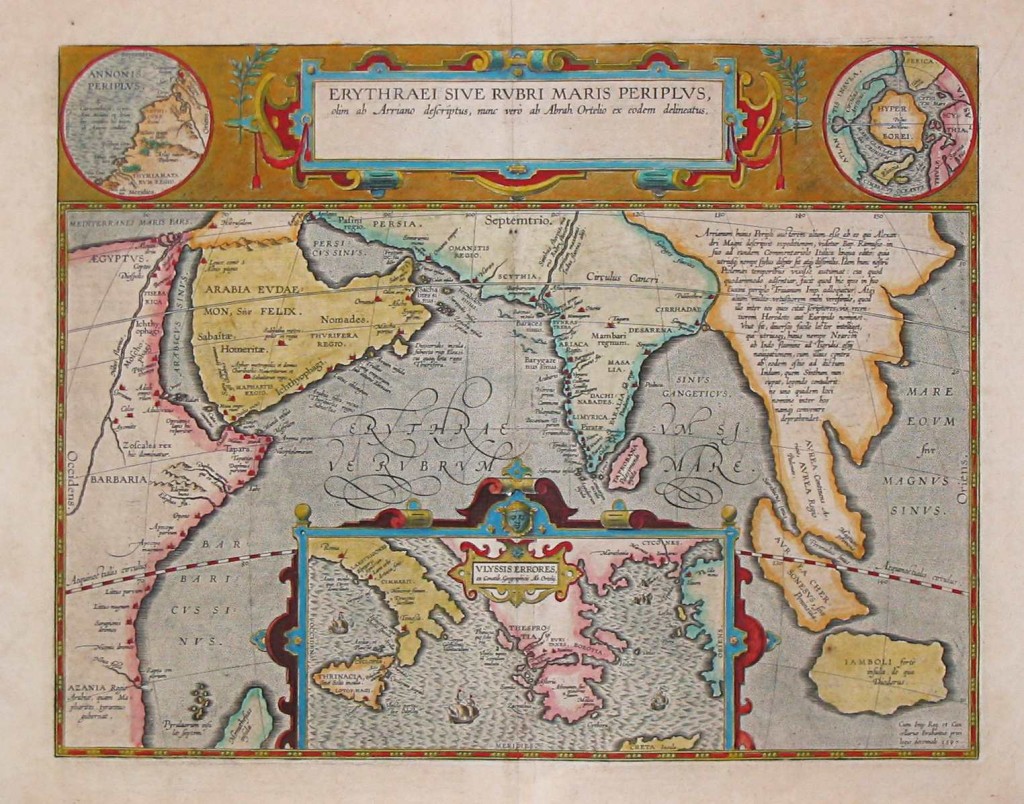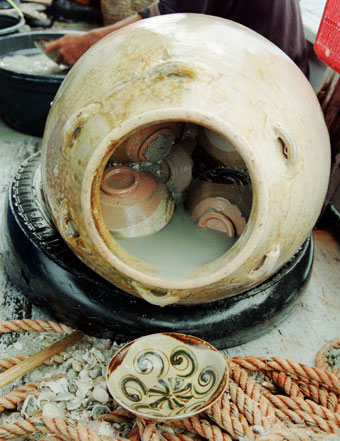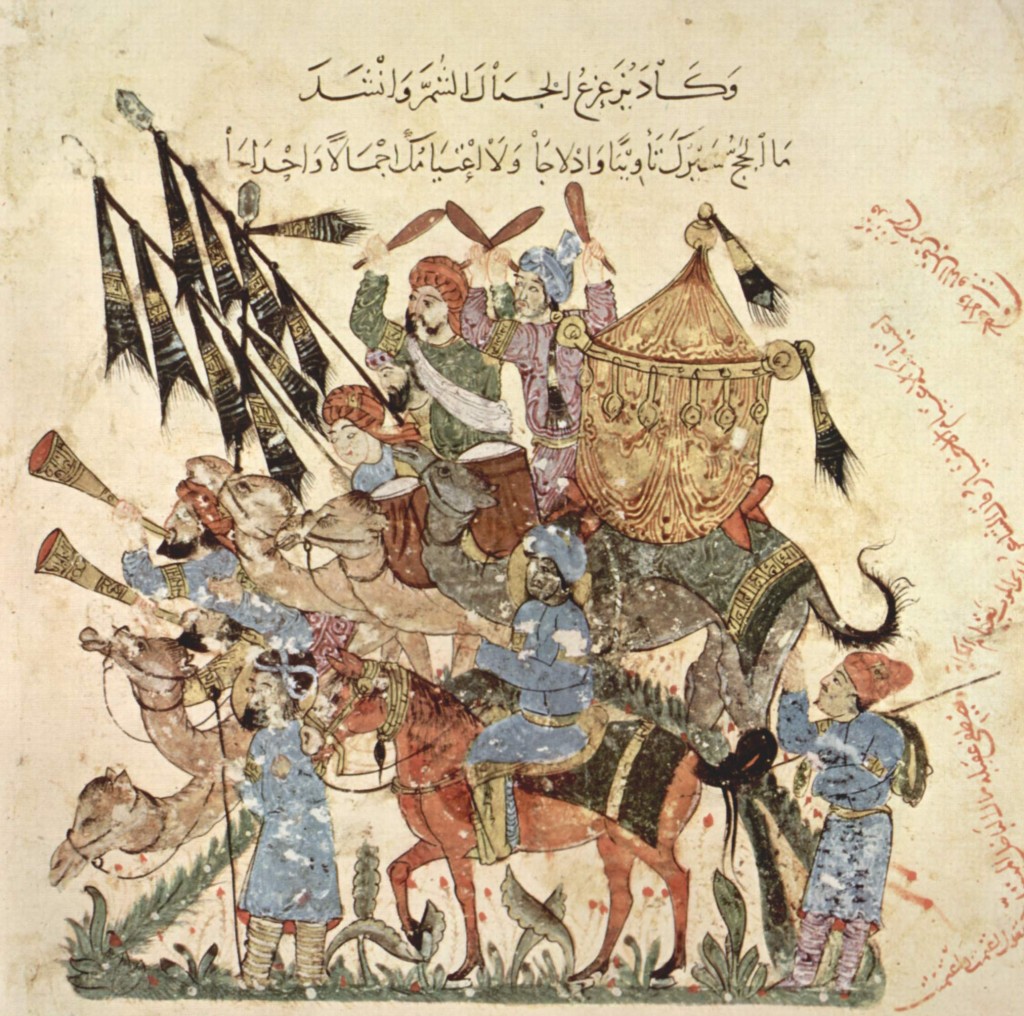Every American schoolchild knows that Columbus sailed west to reach Asia with the hopes of finding precious metals, expensive fabrics, and exotic spices: all goods that were being traded in the Indian Ocean, and had been for millennia. Ancient Greek texts describe an active Indian Ocean economy. Some scholars have even linked the peopling of Australia to a slow, methodic collecting of resources along the coastal route from east Africa.
In the first of a two part episode guest Susan Douglass, author of the Indian Ocean in World History web site, describes the murky beginnings of trade and travel in the Indian Ocean basin, and the cultural exchanges and influences that the trade had in the days before the Europeans arrived.
Guests
 Susan DouglassDirector of Educational Outreach at the Center for Contemporary Arab Studies at Georgetown University
Susan DouglassDirector of Educational Outreach at the Center for Contemporary Arab Studies at Georgetown University
Hosts
 Christopher RosePostdoctoral Fellow, Institute for Historical Studies, The University of Texas at Austin
Christopher RosePostdoctoral Fellow, Institute for Historical Studies, The University of Texas at Austin
What about the Indian Ocean geographically facilitates trade between Asia, the Middle East, and Africa?
Well, there are a few things going way back, as this web site and the project work that I’ve done encompasses all of 90,000 years of Indian Ocean history.
Firstly, the Indian Ocean didn’t experience the cold of the Ice Ages, so for this reason there are a lot of tropical plants and animals whose evolution wasn’t disturbed by the big freeze, including human populations living in the region. So, for this reason it’s a big draw in terms of some very important resources and rare resources around the world.
Another factor, going way back to early history, is that the long shorelines, this great sort of M shape at the northern rim of the Indian Ocean, enabled early people to beach comb and find food, eventually bringing modern humans from East Africa to Australia as much as 40- to 60,000 years ago. So, the migration of humans into this region was very early and their interaction with the resources there is of very long duration. The shorelines have also been an invitation to coasting with the earliest kinds of the simplest boats, from the Red Sea to the Persian/Arabian Gulf, from the Eastern to the Western coasts of India, and East Africa, and around the archipelagoes of South East Asia.
The most famous facilitator of long distance trade, though, is the monsoon wind pattern, which enabled predictable seasonal sailing on open waters. This was probably the first experience of human beings to sail outside the site of land, beyond the site of land, into the Indian Ocean. During certain months each year, the winds blow approximately from north to south in a certain way, off the heated land mass of Asia; in other months the moisture-laden winds blow from south to north, bringing the famous monsoon rains to the coastlines there. Sailors learned that these winds would carry them from East Africa to Arabia, and to the West Coast of India, with similar patterns in the eastern Indian Ocean.
Finally, scholars such as K.N. Chaudhuri and Michael Pearson and many others talk about the role of scarcity in driving trade. So, products like wood were lacking in Arabia but plentiful in East and Central Africa, prized spices and perfumes grew only in the islands of South East Asia, and textile products, tea, medicines, and ivory drove profitable trade across long distances of water.

You just mentioned that this website encompasses 90,000 years of human history, which is a pretty long period to try to encompass. Has it always been major commodity trade? Has the trade at all changed over time?
Well, it’s very hard to know, but a couple of things seem to have changed over time. Of course, the very smallest beginnings of commodity trade go back to the third millennium or more, the very small way trade by people coasting and fishing vessels that might have dealt with some kind of trade was there, and is still there, actually—we should remember that continuity today. But things have changed in terms of the volume as people became more aware of these goods. There was an earlier European idea based on readings of the Periplus of the Erythraean Sea that the Greeks are the ones who discovered the monsoon winds; well, this is highly unlikely. People were traveling on open water in the Indian Ocean probably before 1,000 BCE. There’s consensus in the scholarship that they were using the monsoon winds effectively that early on.
As the trade became well known, products like spices, silk and so on became known and in demand, so the volume increased. We don’t know very well for these earlier periods what the volumes were like, there’s a lot of scholarship going on there, but certainly we have much better records for the later period, particularly European records for the period for the first global era after 1500. This has given rise to the idea that European entry into the ocean kind of stepped up the global trade in the sense that Europeans were said to have invented an Asian economy. That has also been refuted, it’s just that we don’t necessarily know from all the diverse peoples who traveled around the Indian Ocean in what sort of volumes people were trading in earlier times.
As we know from the history of empires such as the Mughal Empire and the Ottoman Empire and the various dynasties of China, nations or pre-modern nations that sit stride the trade routes tend to become economically and politically very powerful as a result of their location. So—and, again bearing in mind that you just mentioned that we know people have been sailing back and forth for 3,000 years—who are some of the major players who were involved with this trade in the Indian Ocean?
Well, I’d like to backtrack just a little bit, in the sense that as I noted before, the initial players were coastal dwellers and fishing people who took advantage of scarcity to trade things found in one place with those found elsewhere. As specialized agriculture produced spices, mining produced gems and metals, craft production in silk and cotton bolstered demand, regular voyages facilitated by the monsoon winds attracted traders from as far away as the eastern Mediterranean, the South China Sea, and the Persian Gulf. As Janet Abu-Lughod showed, there were numerous circuits of trade in the sub regions. Travelers tell of different bundles of goods moving around these circuits and being made available at various ports. There were trading families, there were different ethnic groups that traded in particular places and commodities. For example, people in East Africa—Ibn Battuta writes about how trade happened in Mogadishu run by local families who didn’t necessarily have a great role in seafaring themselves, nevertheless had an enormous role in facilitating and managing that trade from the coast. This situation was replicated around the Indian Ocean by groups in different locales,with more or less of a role sailing the seas vs. facilitating trade from ports or bringing goods from the lands behind the ports.

To the extent that Indian Ocean Empires benefitted from trade, I think it’s less a matter of those empires, in the period before 1500, having tried to achieve any kind of hegemony over the trade or having even directly participated. They benefitted from the flow of goods and they benefitted from it, of course, in the wealth that it brought to them in the form of taxes and customs. It seems that a lot of the trade around the region was somewhat localized to smaller entities than the big empires. That changed when the Europeans entered and, of course, brought huge changes in the commodity trade and other types of trade. When the great East India companies set out to monopolize the trade for themselves vis a vis their other European competitors and also tried to manage things in a much more hegemonic manner, with more hegemonic goals than had been the case previously.
Now, to respond to the question you asked previously about empire, the answer is crystalized in a recent set of shipwrecks that have been found in the South China Sea area, around the Straits of Malacca. The Belitung shipwreck has been discovered to be a 9th century wreck that was most likely under way from T’ang China to the Persian Gulf. It was carrying an amazing array of treasures, some of which are porcelain for very elite purposes, perhaps a royal gift; gold wares also the same, probably also silk that has, of course, disintegrated over time, but also Pottery Barn types of dishes and bowls that would have been more for the sort of mass—if you want to call it a mass market—that can be traced to a certain kiln or ceramic manufacturing center in China. So this testifies to what people thought before was only a “might-have-been” and “could-have-been” is now a certainty. In other words, this kind of long distance trade between one destination and the other, between these two empires, namely the Abbasid and the T’ang, actually did take place. Probably such trade was of considerable value and volume, but that’s the only shipwreck we have so far from that period and place
Just to sort of give a timespan for listeners who might not be familiar with the Abbasid and the T’ang, we’re looking at about the 1st millennium CE.

What other kinds of impact is this trade having beyond the simple economics? When peoples come into contact across a great distance, a lot of times we see stronger cultural connections. Do we find that here as well?
We certainly do. Taking one of the best known examples of medieval travelers, Ibn Battuta, represents a very self-conscious traveler who remarked on his comfort level in the most far-flung places. He mentions a wide variety of textiles, even a cloth of Jerusalem stuff he mentions specifically was given to him by the rulers of Mogadishu, so this speaks of a really active and far-flung trade. It also speaks of a culture of gift giving: he knew what to expect when he went from port to port from those people in ruling positions who hosted him. He also describes, for example, the Chinese ships entering the harbor on the western Malabar coast of India. And in all of these places, he feels at home praying, conversing with Muslim scholars and Sufi adepts. His journey is testimony that trade routes did facilitate the spread of Islam and the demand for trade in Muslim societies intensified those networks.
Now, he’s a representative from a fairly late period, Ibn Battuta is a 14th century traveler, but there are many others that you can trace. One of the main points that users of the Indian Ocean web site can find is, on the medieval map, that there are probably five different sets of travelers representing Hinduism and Buddhism and Islam and Judaism and Christianity traversing the various routes for various purposes. So we shouldn’t think of these routes as “Islamic” trade routes, even though Islam did facilitate trade. They were, in fact, traversed by people of many faiths and, indeed, many travelers report that there was a lot of mingling that took place among people of various religions. So there was not just cultural comfort level among Muslim travelers travelling to visit other Muslim ports of call, but there seems to have been a level of comfort in most of these places for Buddhists and Hindus to mix, and Muslims and Jews and Hindus to mix wherever they were because—hey—it was a profitable business they were engaged in.